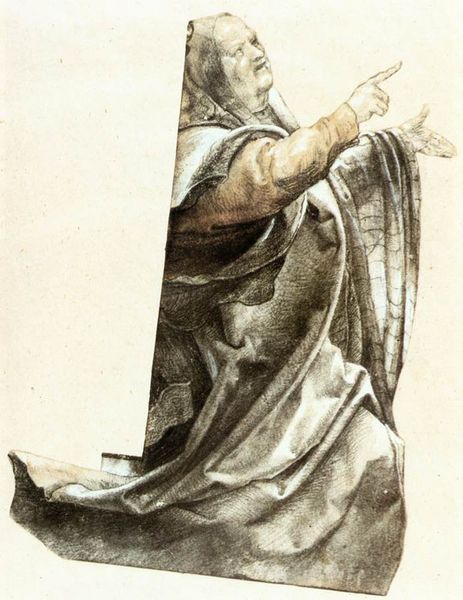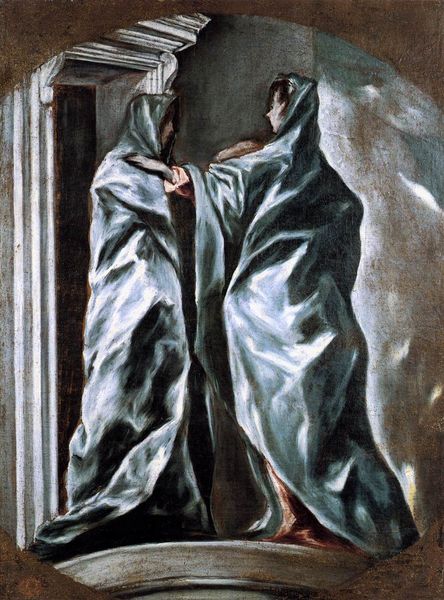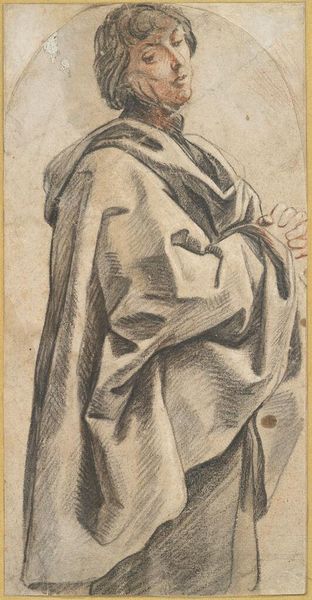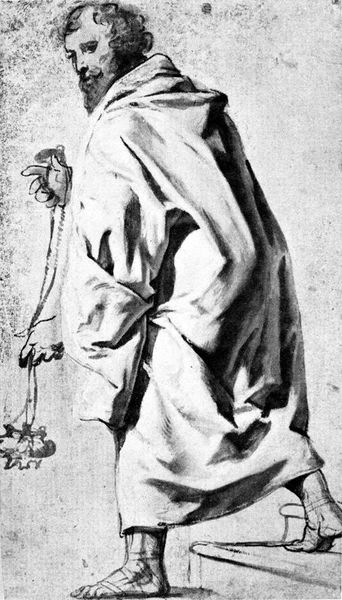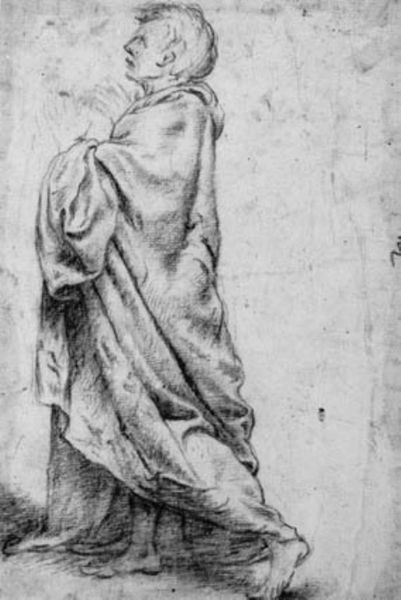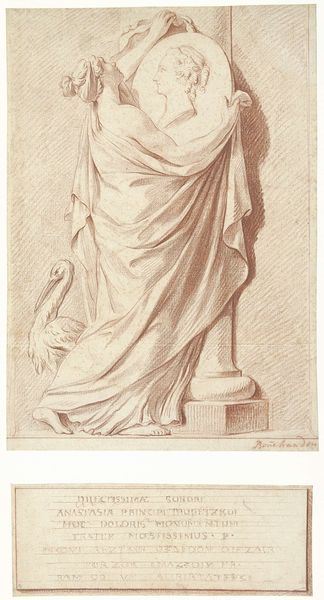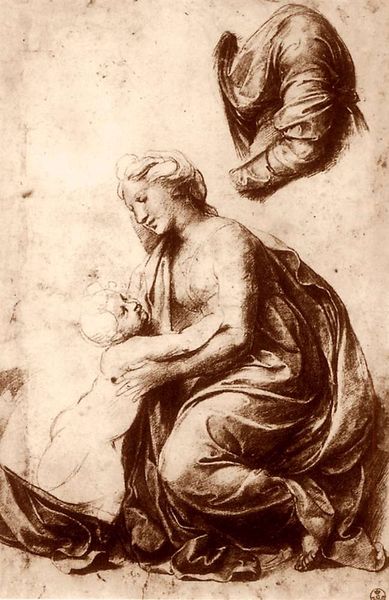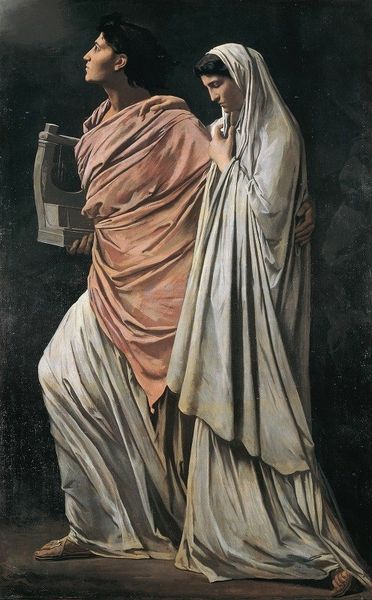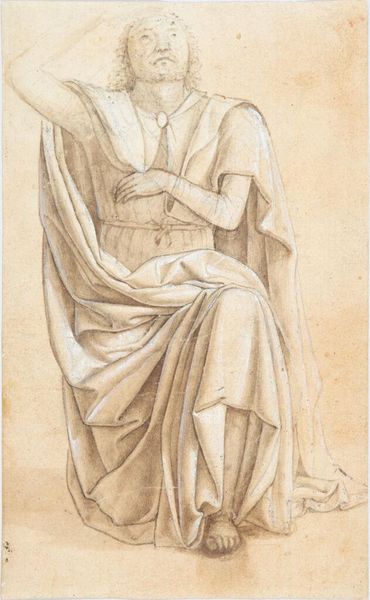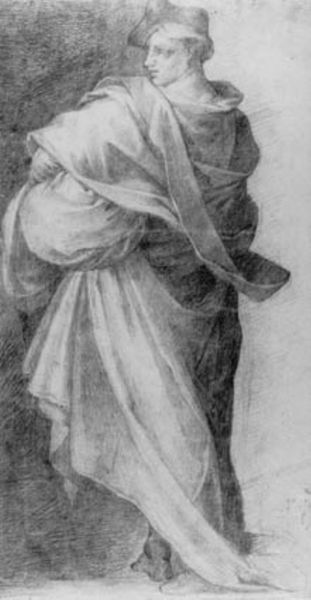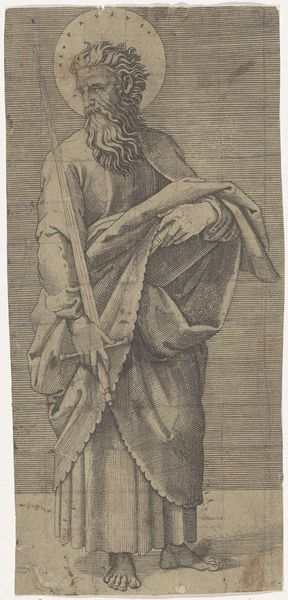
drawing, paper, charcoal
#
drawing
#
charcoal drawing
#
paper
#
form
#
11_renaissance
#
line
#
portrait drawing
#
charcoal
#
charcoal
#
italian-renaissance
Copyright: Public domain
This is Leonardo da Vinci’s “Study of Drapery of a Seated Figure.” The dominant motif here is the elaborate drapery itself, carefully rendered. Throughout history, drapery has been more than mere fabric; it is a visual language. Consider how ancient Greek sculptures used drapery to convey movement, status, and emotion. The folds could suggest the dynamism of a god or the dignity of a citizen. In religious art, drapery often cloaks sacred figures, adding to their mystique and indicating divine presence. Here, Leonardo's intricate folds and shadows evoke a sense of mystery. The heavy fabric seems to possess a life of its own, almost obscuring the figure beneath. Think of how the same motif appears in Renaissance paintings, such as Raphael's Madonnas, where the Virgin Mary’s robes are draped to symbolize purity and grace. This recurring visual element speaks to our subconscious, engaging us on an emotional level. Note how the fabric’s texture and arrangement can evoke profound feelings. In its non-linear progression, it has resurfaced, evolved, and taken on new meanings in different historical contexts.
Comments
No comments
Be the first to comment and join the conversation on the ultimate creative platform.
